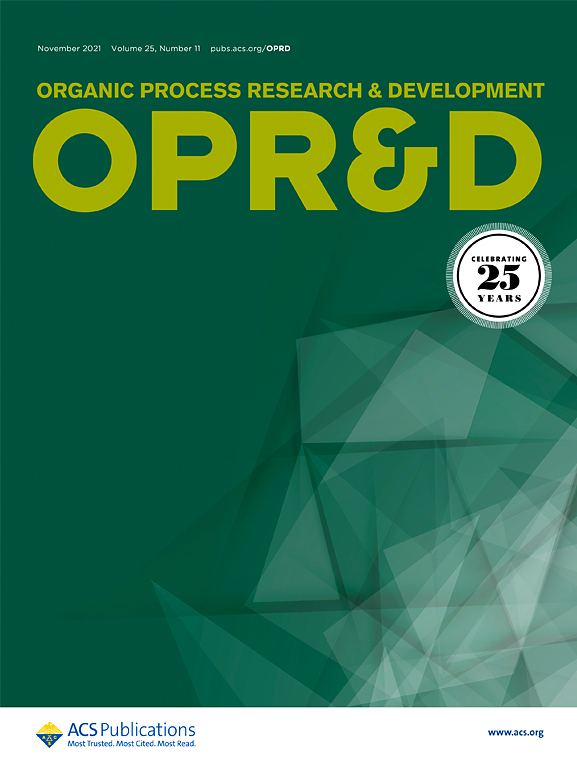Development of a Scalable Synthesis of Casdatifan (AB521), a Potent, Selective, Clinical-Stage Inhibitor of HIF-2α
IF 3.1
3区 化学
Q2 CHEMISTRY, APPLIED
引用次数: 0
Abstract
Casdatifan (AB521) is a potent and selective inhibitor of HIF-2α, currently under clinical evaluation for the treatment of clear cell renal cell carcinoma (ccRCC). Here, we report the development of a scalable synthesis of casdatifan, which was used to support its preclinical characterization and the initiation of phase 1 clinical studies. A convergent approach to assembling the tetracyclic scaffold and the development of efficient routes to key intermediates enabled the successful delivery of material to meet clinical development timelines. Crucial to the efficiency of the synthesis was the strategic design of synthetic routes that leverage a combination of substrate and catalyst control to set each of the 5 stereocenters found in the molecule with exquisite selectivity.

求助全文
约1分钟内获得全文
求助全文
来源期刊
CiteScore
6.90
自引率
14.70%
发文量
251
审稿时长
2 months
期刊介绍:
The journal Organic Process Research & Development serves as a communication tool between industrial chemists and chemists working in universities and research institutes. As such, it reports original work from the broad field of industrial process chemistry but also presents academic results that are relevant, or potentially relevant, to industrial applications. Process chemistry is the science that enables the safe, environmentally benign and ultimately economical manufacturing of organic compounds that are required in larger amounts to help address the needs of society. Consequently, the Journal encompasses every aspect of organic chemistry, including all aspects of catalysis, synthetic methodology development and synthetic strategy exploration, but also includes aspects from analytical and solid-state chemistry and chemical engineering, such as work-up tools,process safety, or flow-chemistry. The goal of development and optimization of chemical reactions and processes is their transfer to a larger scale; original work describing such studies and the actual implementation on scale is highly relevant to the journal. However, studies on new developments from either industry, research institutes or academia that have not yet been demonstrated on scale, but where an industrial utility can be expected and where the study has addressed important prerequisites for a scale-up and has given confidence into the reliability and practicality of the chemistry, also serve the mission of OPR&D as a communication tool between the different contributors to the field.

 求助内容:
求助内容: 应助结果提醒方式:
应助结果提醒方式:


